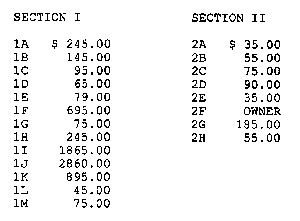|
Real estate agents often allude to the hordes of inspectors and
engineers that
must visit any property that's put up for sale. The idea is that it takes a seasoned real estate agent
to navigate this difficult process.
Not
true.
When
selling my Sacramento rental, the only inspection I needed to
arrange was the pest inspection. Since I didn't want to wait
around to let the inspector inside the house, I simply put a key in
a lockbox that was attached to the front doorknob and gave the pest
inspection company the combination. The inspection was done
within a week.
After
I accepted their offer, the buyers arranged to have a home
inspection and appraisal performed at their expense. Once
again, I left a
key in a lockbox so that the inspector and appraiser could get into the house.
Pest (or termite) inspection
After you've accepted an offer, your buyers will usually need a
recent pest inspection in order to get financing. This
is normally done at the seller's expense.
It's
often best to get this inspection out of the way early on.
Here's why:
-
If
there is damage (dry
rot, termites, etc.)
that will prevent your buyer from getting a loan, you'll want to
correct it.
If you put this off until the last minute, you might not be able
to get the work done cheaply.
-
Prospective
buyers often like to see clear pest inspection reports before they
make offers.
The
downside to getting your pest inspection done right away is that the
inspection reports are usually valid for a limited period of time,
say 3-6 months. If your house doesn't sell within this
time frame, you'll need to pay for a re-inspection. Each
inspection or re-inspection costs about $100 - $300.
Along
with their reports, many pest inspection companies will submit a bid
to correct the damage. Remember, you're
under no obligation to hire them to do the work. In my
experience, you can save money by doing some of the work yourself,
or by bidding it out to other contractors. I like to get at
least three bids on any home improvement job worth more than $5,000.
 |
In California, pest inspectors separate damage into two
categories: Section I, which includes "active
damage and infestation to wood by wood destroying organisms and
pests," and Section II damage, which includes "conditions
deemed likely to lead to damage or infestation to wood by wood
destroying organisms and pests if the condition is not corrected."
The seller is usually expected to repair all Section I damage
and the buyer all Section II damage. |
Home
inspection
After
you've accepted an offer and the home goes into escrow, the buyer
will probably hire a company to do a home inspection. The
inspector will look over the house inside and out, and prepare a report
detailing any problems. Most buyers and home inspectors won't want
you to be in the house during the inspection. If you choose to stick around
during this inspection, don't tag along after the inspector and don't
challenge his or her findings.
If
the home inspection turns up problems (like faulty wiring or
loose tiles in the shower), you usually need to negotiate with the buyer
over whether these things should be repaired and, if so, who should pay
for them. I'll talk more about this later.
This
article recommends that sellers pay for a home inspection before the
house is put on the market. If you choose to do this, you should accompany the inspector when he or she tours the
house.
Radon
inspection
In
some areas, buyers will require a radon inspection in their offer.
As with home inspections, the buyer normally hires and pays for this
after the property has entered escrow.
Useful
resources
Next
topic: Preparations
ŠLori
Alden, 2008. All rights reserved.
|